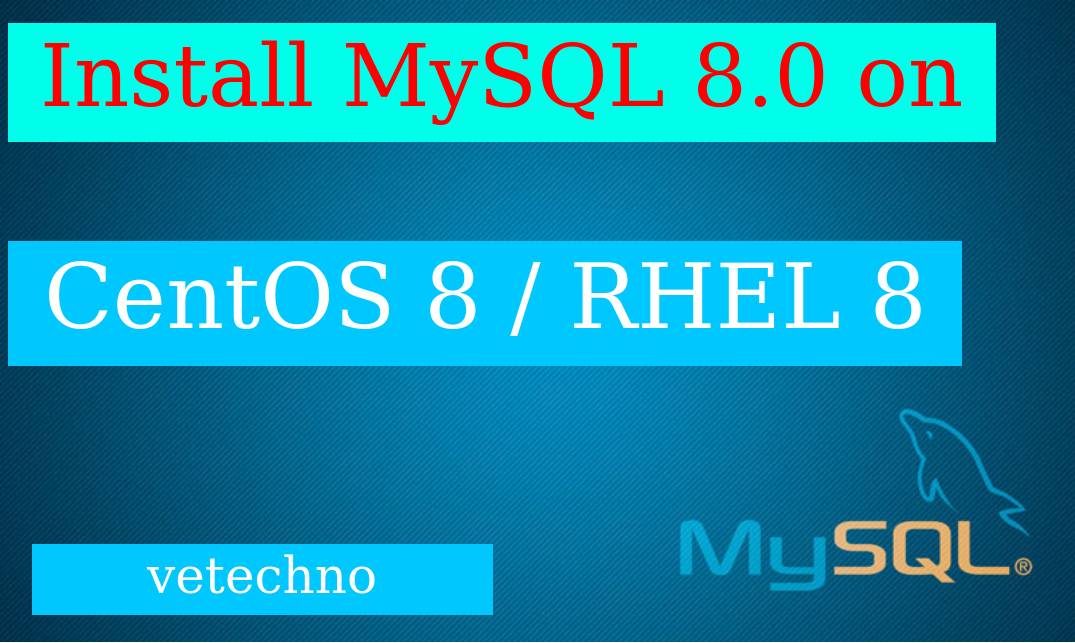How to Install MySQL 8.0 on CentOS 8 / RHEL 8 | vetechno
 |
| How to Install MySQL 8.0 on CentOS 8 / RHEL 8 | vetechno |
Hey reader, In this tutorial we are going to install mysql 8.0.29, which is the latest version of mysql community.
MySQL is an open-source database management system and free to use. It is commonly installed as part of the most popular LAMP (Linux, Apache, MySQL, PHP/Python/Perl) stack and LEMP (Linux, Nginx, MySQL, PHP) stack.
It uses a relational database and SQL (Structured Query Language) to manage its data. It is the most common software stack that comes up with dynamic websites and web applications.
This tutorial will help you to install MySQL 8.0 on CentOS 8 and RHEL 8 systems.
Prerequisites:-
* Need root user access.
* Internet
* CentOS 8 / REHL 8
Also read
Install MySQL 8.0 on CentOS 8 / RHEL 8
@mysql is a module that will help you to download and install the MySQL server and its dependencies along with it.
vikash@vetechno:~$ sudo dnf -y install @mysqlStep2. Now we need to enable the MySQL service to auto-start on the system start.vikash@vetechno:~$ sudo systemctl enable mysqld.service
vikash@vetechno:~$ sudo systemctl start mysqld.service
vikash@vetechno:~$ sudo systemctl status mysqld.serviceSecure MySQL Installation
vikash@vetechno:~$ sudo mysql_secure_installationFollow the on screen and input below details.
# Press y|Y for Yes, any other key for No: y
# Please enter 0 = LOW, 1 = MEDIUM and 2 = STRONG: 2
# New password: [ENTER STRONG PASSWORD HERE]
# Re-enter new password: RE ENTER PASSWORD HERE
# Do you wish to continue with the password provided?(Press y|Y for Yes, any other key for No) : y
# Remove anonymous users? (Press y|Y for Yes, any other key for No) : y
# Disallow root login remotely? (Press y|Y for Yes, any other key for No) : y
# Remove test database and access to it? (Press y|Y for Yes, any other key for No) : y
# Reload privilege tables now? (Press y|Y for Yes, any other key for No) : yLog into MySQL
vikash@vetechno:~$ mysql -u root -p Conclusion
You have successfully installed and configured MySQL 8.0 on CentOS 8 system.
Let us know if you are facing any issue while installing in comment section, we will happy to help you.
Also read
You may Also like



Comments
Post a Comment